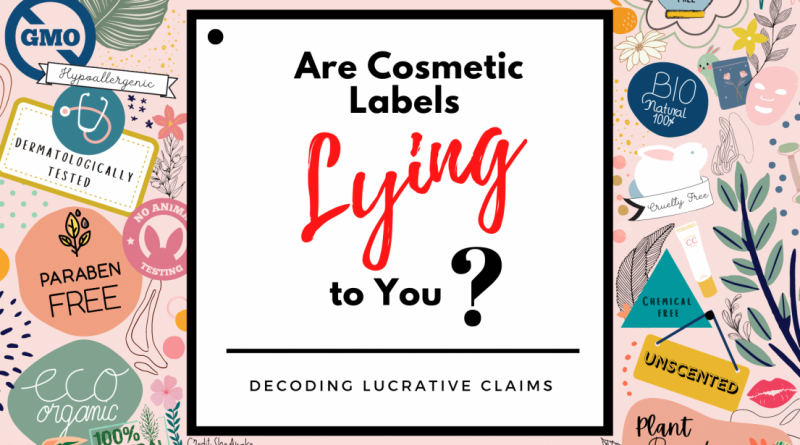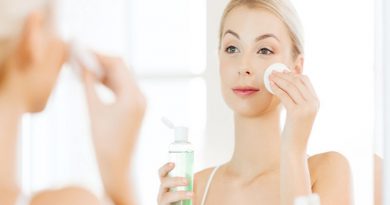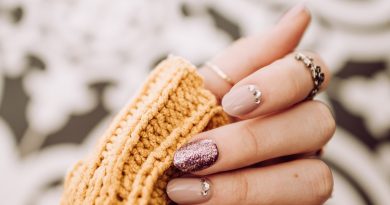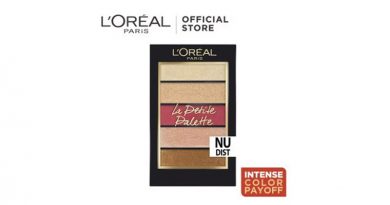Are Cosmetic Labels lying to you? Decoding Lucrative Marketing Claims!
The beauty industry is booming. In an article published in Forbes last year, the industry was worth $532 billion business globally and growing steadily at 5% – 7% each year. As makeup sales dropped during the pandemic, the skincare industry expanded. It’s not shocking; Self-care is certainly therapeutic. However, lucrative ‘FOMO’ marketing and our consumerist behaviour may have us believing many lies.
According to research, 93% of consumers purchase a product because of its appearance. This includes package design, labelling, and overall aesthetics.
Based on a study on “Consumer Preferences, Product Characteristics, and Potentially Allergenic Ingredients in Best-selling Moisturizer,” published in 2017, products with the claim “Dermatologist Recommended” had a higher median price.
Furthermore, products with a “fragrance-free” claim had at least one fragrance cross-reactor or botanical ingredient.
This column is going to explore what these trendy beauty labels actually mean?
It may shock you to find most claims on labels, maybe just be empty claims.
1. Dermatologically Tested
We often see the label “Dermatologically Tested” on fancy beauty products. What does “Dermatologically tested actually mean?”
In real terms, it means a dermatologist(s) considered the product mostly safe for use. There are many loopholes, though.
The dermatologist may have tested it on any part of the body. The skin on our face and that of our body are not alike and can alter results. There are no legal and industry norms/guidelines to determine the preconditions for the testing, which leaves a massive room for discretion.
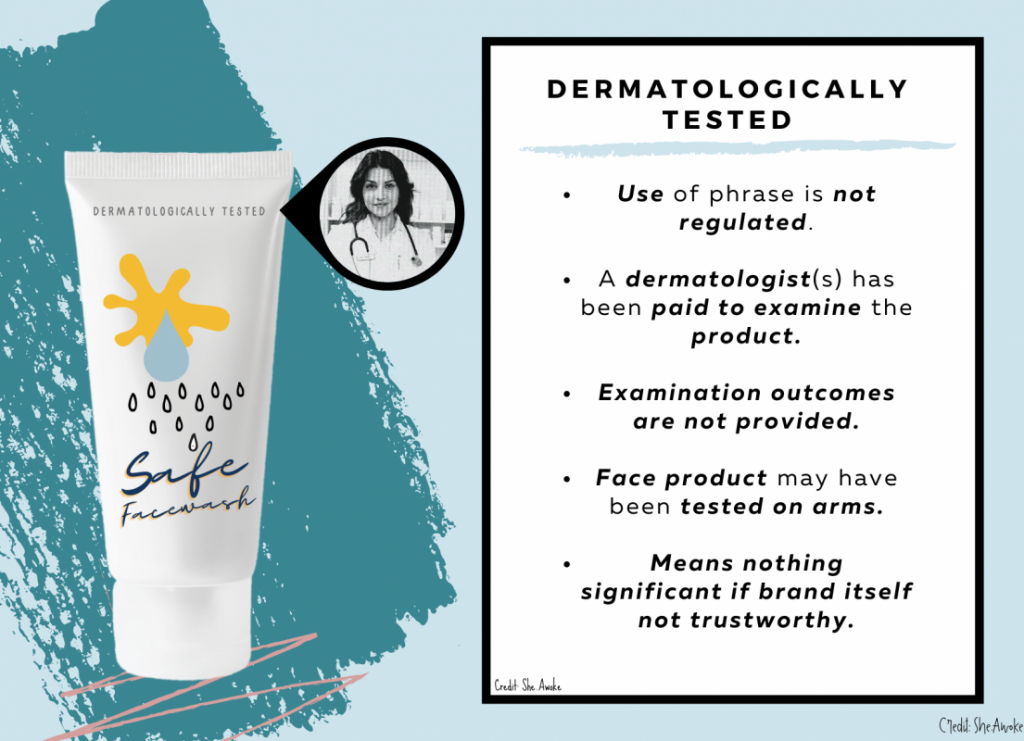
Crucial details of the examination like :
- No of subjects,
- Duration of the test,
- Age & skin type of the subjects,
- Methods of observation and analysis,
- Detailed results, etc.,
are not provided.
Without these details, the label means that a dermatologist was paid to examine the product, and in their sole opinion, the product is commonly safe for use.
2. Hypoallergenic
Hypoallergenic is frequently stamped on beauty products. In 1978, the United States Federal Court denied FDA to frame regulation requiring cosmetic manufacturers to conduct tests to back up any claim that a product is “Hypoallergenic.” It is yet another empty term. No cosmetic product can declare itself to be non-allergic. Biologically each person’s skin reacts differently based on their skin functioning and immune system.
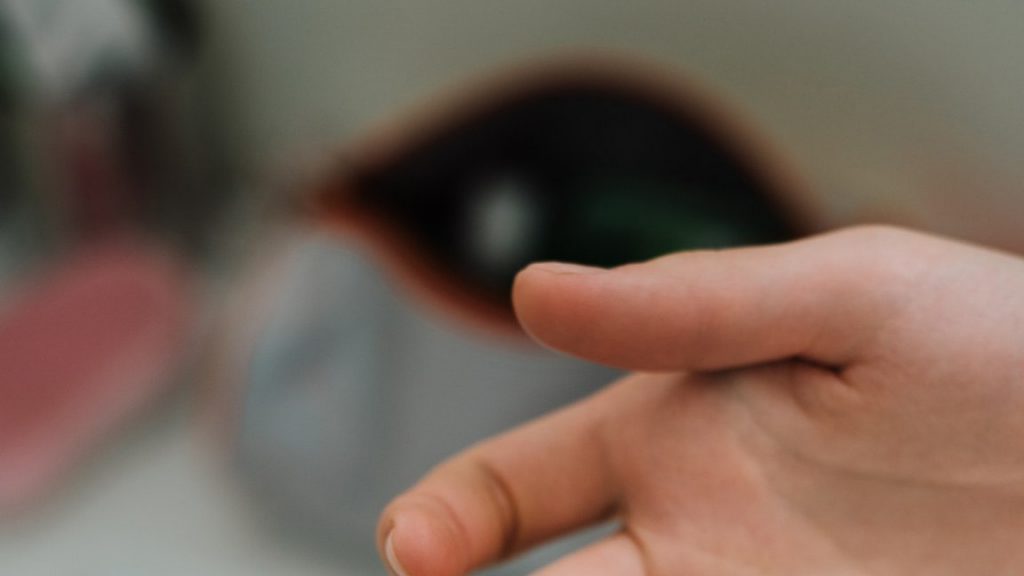
The label “Hypoallergenic” means that their product is less likely to cause an adverse allergic reaction than other products in the market in the opinion of the manufacturer. Decades ago, harsh – unrefined chemicals, dyes, perfume & common allergens were used in formulating cosmetics. In modern times, reputed brands perform various pre and post formulation evaluations to ensure their product does not trigger allergies.
Researchers have identified well-tolerated ingredients and novel formulating techniques to reduce the chances of adverse reactions. A brand’s purpose and values, along with the actual ingredient list, matter more than the label itself. Some cosmetics may be using the tag “Hypoallergenic,” yet the actual product may include identified allergens.
Now that we are learning about some important terms in the beauty and makeup industry, you must also know the difference between deodorants and antiperspirant since we use either of the two in our daily lives. Read more about it here!
3. Chemical – Free
This ridiculous marker has been getting increasingly popular in recent times. Everything on the planet has a chemical composition. All-natural substances comprise hundreds of chemical compounds. A single banana comprises over 40 chemicals. The buzzword “Chemical-free” is nonsensical and fallacious. A better term may be to say the product is free of harsh chemicals. As a mantra to fix the misinformation spread by these labels – Chemicals are our friends, not foes.
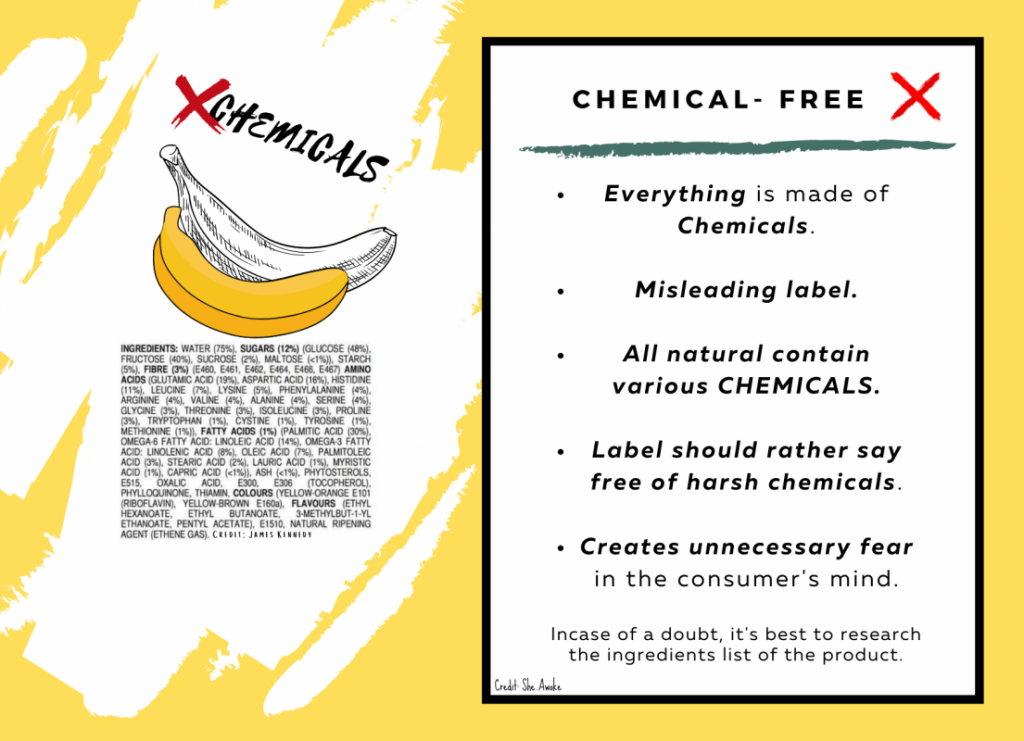
4. Natural
The term ‘Natural’ is entirely unregulated. It is also ambiguous. Natural may imply that there are no synthetic chemicals in the formulation. It can also mean that there are some synthetic chemicals, but most other compounds are naturally derived. In any sense, this label does not hold much relevance other than representing brand philosophy.
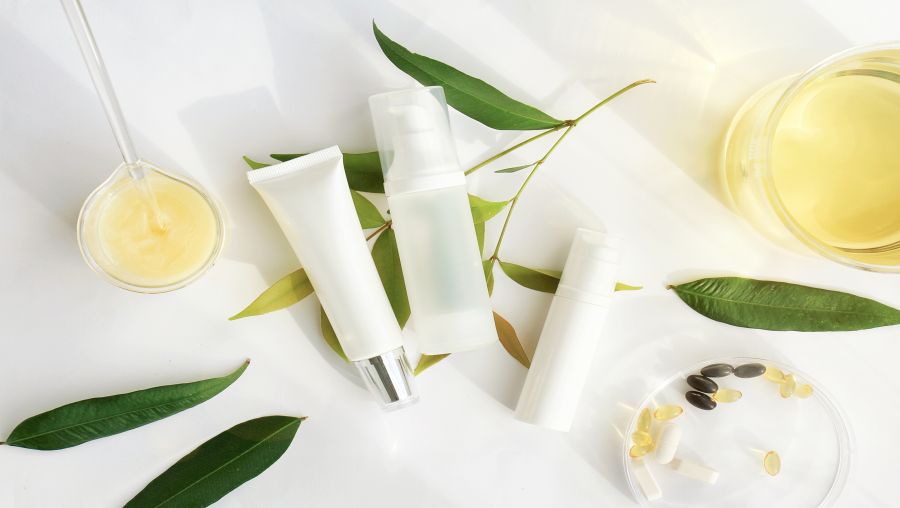
5. Organic; India Organic; 100% USDA Organic
The label organic can mean a plethora of things. The term ‘Organic’ commonly means harvest produced without chemical fertilisers, pesticides, or other artificial chemicals. Unlike most labels, some organic labelling can tangibly mean something. In India, “APEDA” regulates organic products’ certification as per the National Standards for Organic Production (NSOP) under the “India Organic” certification. European countries and Switzerland adopt NSOP standards and systems of certification. USDA has recognised NPOP conformity assessment procedures of accreditation as equivalent to that of the US. In conclusion, organic can be a regulated term.
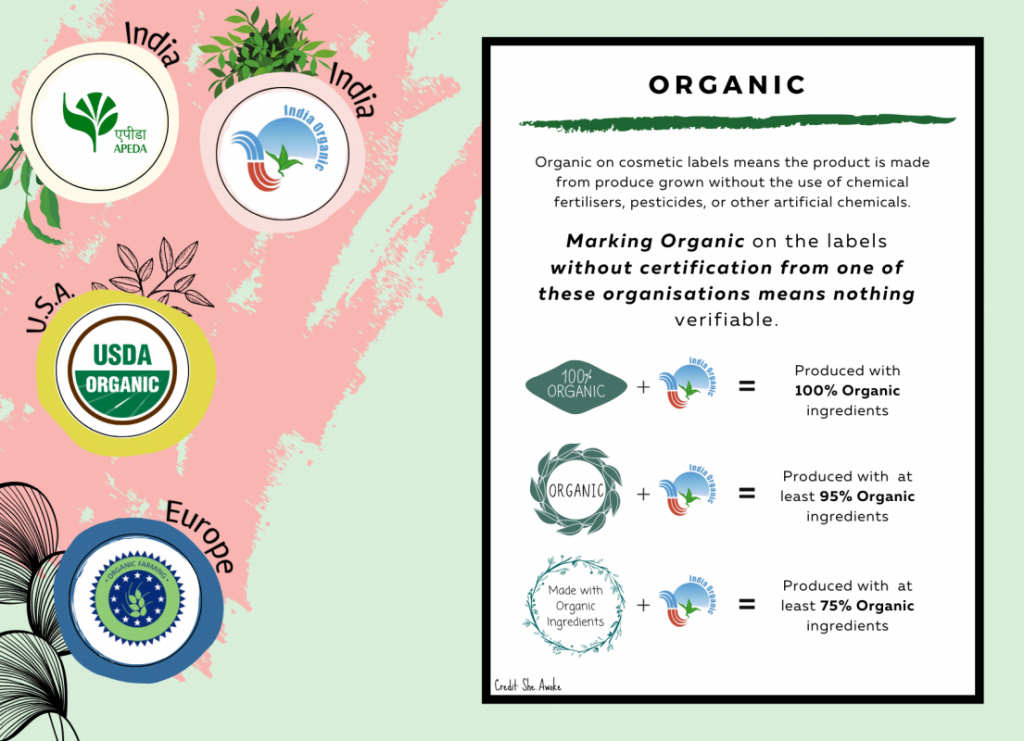
There is a huge caveat, however.
- The simple term ‘organic’ means nothing verifiable, at least on cosmetics.
- The label “100% Organic as per USDA/India Organic/APEDA” means the product is formulated using ONLY organically produced ingredients.
- The label “Organic as per USDA/India Organic/APEDA” means that the product contains 95% Organically produced ingredients.
- The label “Made with organic ingredients as per USDA/India Organic/APEDA” means the product is made using at least 75% organically produced ingredients.
If your brain already hurts, I hope you understand what I mean when I say labels can be deceiving.
6. Fragrance-Free; A controversial label
“Fragrance in cosmetics” has become contentious in recent times. Many widely used compounds under the tag of “perfume” have been studied to be common allergens. Thus, several brands are marking themselves to be ‘Fragrance – free.’ However, it can be challenging to evaluate if a product is genuinely free of allergens from fragrance. Oils, waxes, chemicals, citrus produce, etc. used in formulating cosmetics have an innate scent.
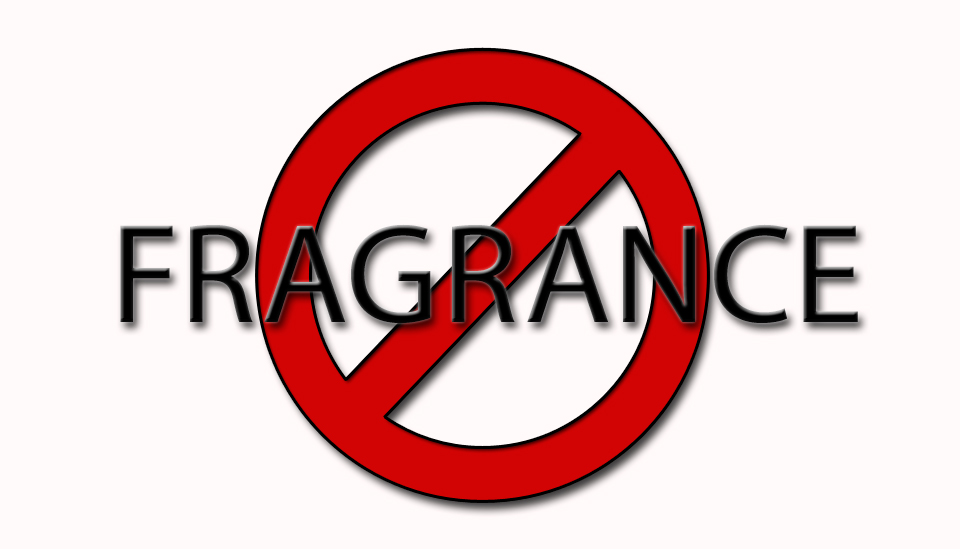
Sometimes the natural smell of a formulation is very unpleasant. Popular cosmetics are designed to provide a sensory experience as it influences sales exceedingly. A fragrance-free product may not contain any ingredients added to announce a smell but may contain ingredients that have a natural scent, such as essential oils. Essential oils comprise hundreds of chemical compounds, many of which can be the identified allergens used in synthetic fragrance.
Many brands use this deception technique. These brands do not add any synthetic/artificial ingredients to add a scent but add naturally fragrant ingredients for therapeutic applications. It is necessary to keep in mind that if a compound present in synthetic perfumes is causing allergies, the same may be present in a so-called “fragrance-free” product but disguised as natural oils and botanical extracts.
7. Unscented
Unscented products are formulated to impart no scent. It means they may contain fragrant ingredients added to neutralise the smell. This label can mislead ignorant consumers.
Generally, different countries have different regulations regarding fragrance, and sometimes companies can get away by using loopholes in these regulations. Additionally, regulations are created keeping in mind the permissible limits in a single product. The millennial consumer is layering multiple products. It is crucial to pick a research-oriented brand passionate about delivering compelling products and one which has consumer safety as a priority. It is imperative to consider the brand’s suppliers, research, product, philosophy, ethics and actual performance rather than just falling for tall marketing claims made on the label.
8.Cruelty – Free v/s Vegan
Millennials, as a generation, are ‘woke.’ The new-age consumer does not want to hurt animals for their ornamental demands. Cruelty-free & vegan products are becoming increasingly popular. Many companies are trying to market themselves as ‘Vegan’ & ‘Cruelty-free.’ There is a lot to know concerning intent before frantically trusting brand labels.
The label ‘Cruelty-Free’ indicates that the products have not been tested on animals for examining the safety for human use. The label ‘Vegan’ indicates that the cosmetic is free of animal products & by-products. Thus, Vegan cosmetics should not contain any ingredient derived directly or indirectly from an animal. Nevertheless, both are mutually exclusive terms. A labelled vegan may not be cruelty-free or vice versa.
Cruelty-free certification may be provided by three chief organizations, namely, Leaping Bunny, PETA, and Choose Cruelty-Free. All three organizations provide certification to companies based on their products, after which the companies can label their products with their respective distinctive logo. Merely writing “cruelty-free” on the packaging does not verify anything.
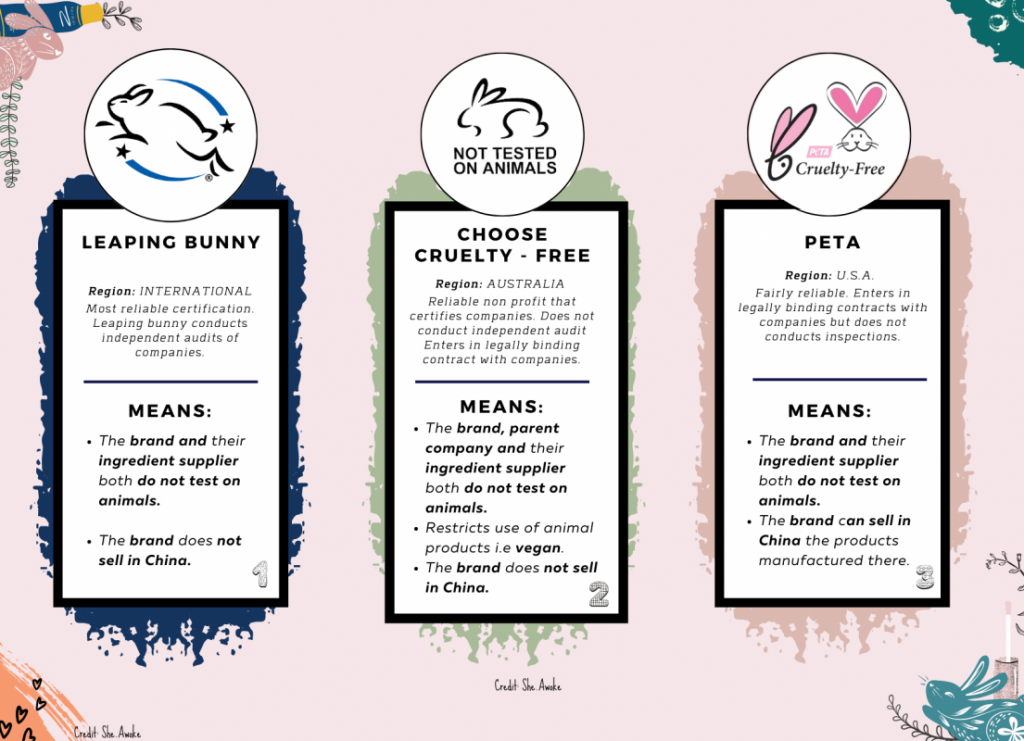
Companies may present dry claims by merely stamping the phrase; Making it essential for the consumer to identify the named organisations’ certification logos. Another caution is that mainland China is obligated by law to test all imported products on animals before the sale. Domestic products are subject to animal testing only if there is a safety concern, after being available for sale. Thus, if an international company’s products are sold in China, it establishes that the brand is not truly ‘Cruelty – Free.’
The description ‘Vegan’ plummets more in-depth into the ingredients that make into the final product but do not consider whether the ingredient or product has been tested on animals. In essence, a vegan brand should seek to be cruelty-free as well. However, that may not always be the case. It is upon the consumer to examine the profundity in the brand’s purpose if contradictions exist in their philosophy.
9. Non-Comedogenic
Follicular hyperkeratinization, meaning excess build-up of dead skin, may cause pores to clog. Clogged pores are called comedones.
Comedogenicity outlines the degree to which an ingredient can clog pores. The most popular test for comedogenicity, which involved applying the ingredient(s) to a Rabbit’s inner ear, was pioneered by two famous dermatologists, Albert Kligman and James Fulton, for safety testing cosmetics in the 1970s. This test became an industry-standard in the years to follow.
This test requires applying an ingredient/formula to a Rabbit’s inner ear and observing for a few weeks for any clogged pores. The skin on the rabbit ears is more reactive than human skin and responds more quickly to comedogenic products. This method is not foolproof. Many fallbacks in this method have been identified over the years, even though many companies continue to rely on this testing approach.
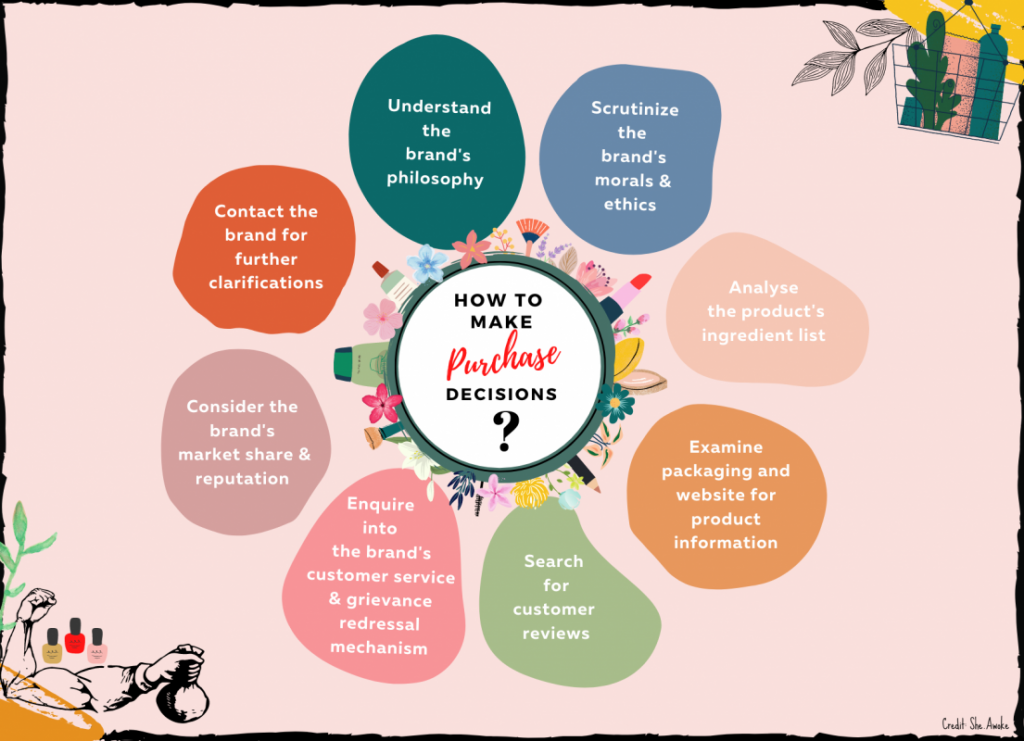
Rabbit years have been studied to have naturally enlarged pores; thus, many ingredients that proved to be comedogenic on rabbits do not cause acne in humans. The converse is also true. Since the skin on the rabbit’s ears is not precisely similar to human facial skin, many products that did not cause comedones on rabbit skin have been known to cause comedones on Human skin.
Owing to the presence of false conclusions and increasing demand for cruelty-free formulations, companies started conducting comedogenicity tests on the skin on the back of human subjects. Although, again, the skin on our back is not the same as the skin on the face.
Moreover, skin biomechanics is different for each person. Genetic, hormonal, health & environmental factors collectively determine if a particular ingredient may react to cause comedones. It is maybe precautious to consider the comedogenicity scale, but it is in no manner an absolute. No product can be 100% non-comedogenic for everyone. From a regulatory standpoint, no governing guidelines are establishing the use of the term. A product rated below three on the comedogenicity scale, or is causing clogged pores to less than 50% of subjects may be labelled ‘Non – Comedogenic.’
Summary
As the competition grows in our capitalist world, brands will keep coming with new marketing tactics to drive sales. Some of these marketing trends are factually deceitful. The need to make conscious and informed purchase decisions are undeniable. It is essential to look at all aspects and information before purchasing cosmetics rather than simply believing tall claims made by companies.
By: She.Awoke

